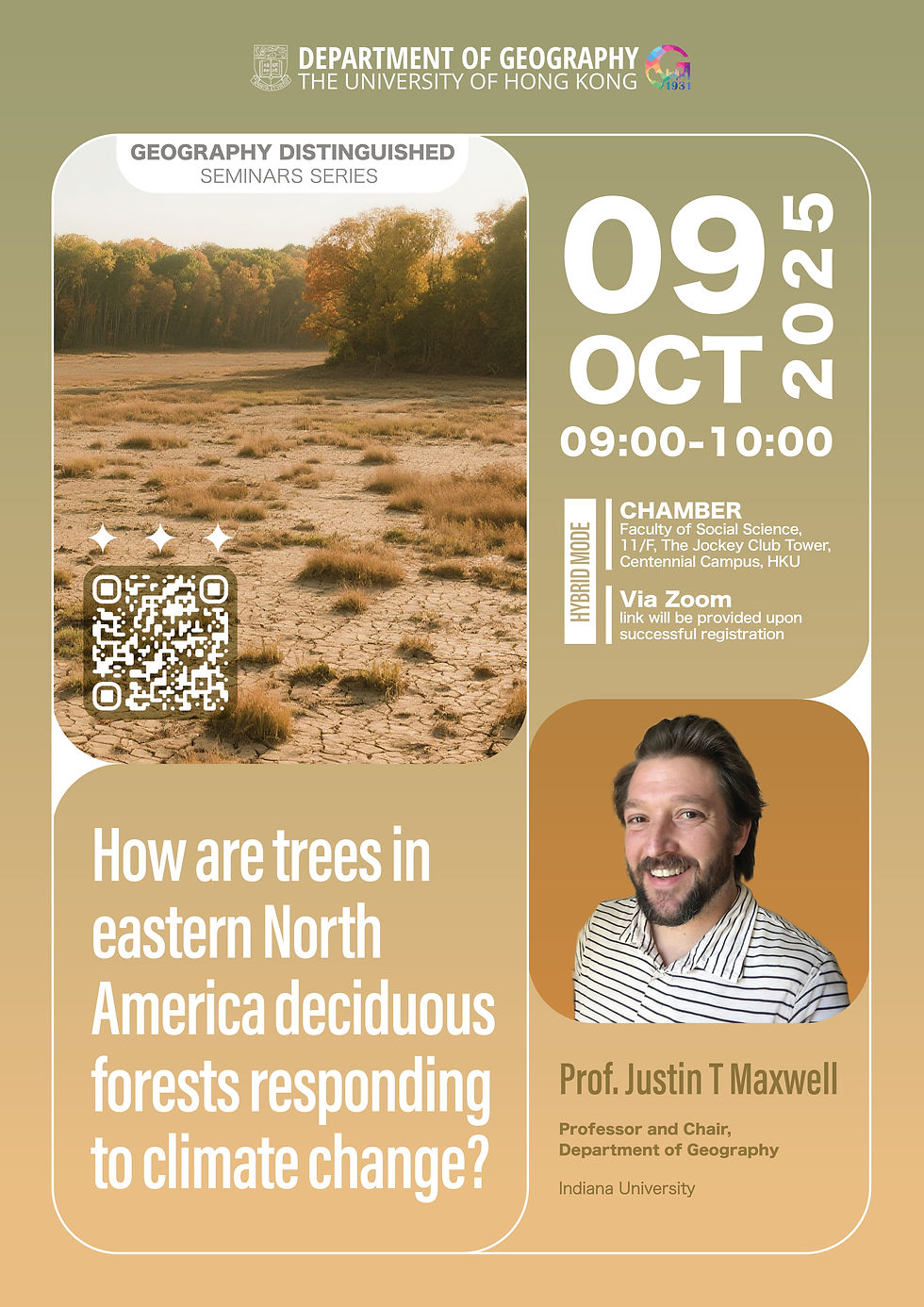09 OCT 2025 (THU) 09:00-10:00
- GEOG HKU

- Oct 9
- 2 min read
Geography Distinguished Seminars Series
How are trees in eastern North America deciduous forests responding to climate change?
Date: 09 OCT 2025 (Thursday)
Time: 09:00-10:00 (HKT)
Venue: Chamber, Faculty of Social Sciences, 11/F, The Jockey Club Tower, Centennial Campus, HKU
Mode: Hybrid
Via Zoom: Zoom link will be provided upon successful registration
Registration link: https://hkuems1.hku.hk/hkuems/ec_hdetail.aspx?guest=Y&ueid=103129
Abstract:
While ongoing climate change affects a number of meteorological drivers relevant to plant functioning, an increase in the frequency and severity of drought events may ultimately have the largest impact on ecosystem carbon cycling. Much of what we know about tree response to drought comes from the relatively dry regions, where droughts are prolonged and often lead to tree mortality. Less attention has been focused on the humid regions, such as the eastern US, where drought-induced mortality is rarer but drought-related declines in carbon uptake and growth are nonetheless profound. Using a well replicated network of tree rings, I will present work that better examines how climate, particularly drought can impact tree growth and how that relates to carbon uptake. We find that a water use strategy (isohydric/anisohydric) framework can help explain species-specific tree growth response to drought when examining the magnitude of growth reduction (i.e. effect size) of species-specific responses to mild droughts. Our findings suggest that species that have a conservative water use strategy (mesic species) tend to have greater growth reductions to drought. Forests in the eastern US are transitioning to have more mesic species. Thus, the ongoing demographic shift toward more mesic species in the eastern United States combined with drier conditions results in larger drought-induced growth declines, suggesting that drought will have an even larger impact on aboveground carbon uptake in the future in the eastern United States.
Professor Justin T Maxwell
Professor and Chair, Department of Geography, Indiana University
Prof. Justin Maxwell’s research bridges climate science and ecology using dendrochronology (the study of tree rings). Dr. Maxwell was trained as a climate scientist and has published papers that use tree rings to understand centennial- to millennial- scale variability of climate (i.e., paleoclimate). In so doing, he has developed long-term reconstructions of variables such as soil moisture, precipitation, and temperature for periods before instrumental records began. More recently, Prof. Maxwell has been using tree rings to understand how climatic extremes, such as drought impact forest ecosystems. He has published paper that aim to understand species-specific growth response of trees to drought to better understand how resilient or vulnerable forests are to ongoing climate change.












![[Rescheduled] 16 DEC 2025 (TUE) 14:00-17:00](https://static.wixstatic.com/media/21d32f_a0d841cca7c1459ca9db9d3d86d328c2~mv2.jpg/v1/fill/w_980,h_591,al_c,q_85,usm_0.66_1.00_0.01,enc_avif,quality_auto/21d32f_a0d841cca7c1459ca9db9d3d86d328c2~mv2.jpg)


Comments